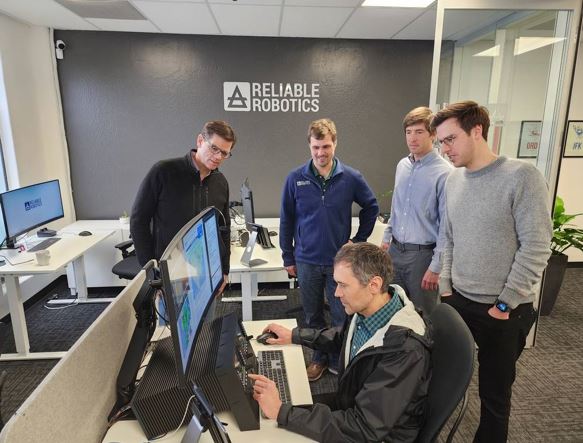
As part of the agency’s broad portfolio of work on Advanced Air Mobility, NASA researchers visited the Mountain View, California headquarters of industry partner Reliable Robotics in late February to observe flight testing according to a statement. The NASA team it says collected data from multiple sources for analysis including Federal Aviation Administration (FAA) primary surveillance radar data which may be used in detect and avoid systems that would support future autonomous flight in the advanced air mobility system.
According to the press release “The test involved Reliable Robotics flying its Cessna 172 Skyhawk and 208 Caravan aircraft from San Martin Airport in San Martin, California in preselected flight paths between Marina and Stockton, California. The NASA team worked with FAA radar engineers, the Oklahoma University Advanced Radar Research Center, Reliable Robotics, NASA’s Armstrong Flight Research Center in Edwards, California and NASA’s Ames Research Center in Silicon Valley, California to collect all data from the flight tests. Data from at least eight sources including aircraft, radar, and weather were integrated for analysis as a foundation for future research.
“Under current FAA operating rules, all pilots are required to physically see and avoid other aircraft from inside the cockpit. Autonomous, or self-flying aircraft without human pilots will need onboard sensor capabilities such as radar, light, acoustic, or a combination of these sensor types to ensure flight safety. The data and analysis from this testing will help researchers understand if primary radar can be used for detect-and-avoid systems to satisfy the rule’s safety intent.
“No clear certification or operating rules for detect and avoid systems have been established or finalised for advanced air mobility, but if refined and validated, such a model could be trusted and depended on by both industry and regulators to maintain safe flight operations.”
NASA says it seeks to combine this research with other data and complete the model and report to share with the FAA. The research it says should be available to the public by the fall of 2023.
For more information
https://www.nasa.gov/feature/nasa-research-gathers-key-radar-data-for-autonomous-air-cargo-delivery
(Image: Reliable Robotics)

